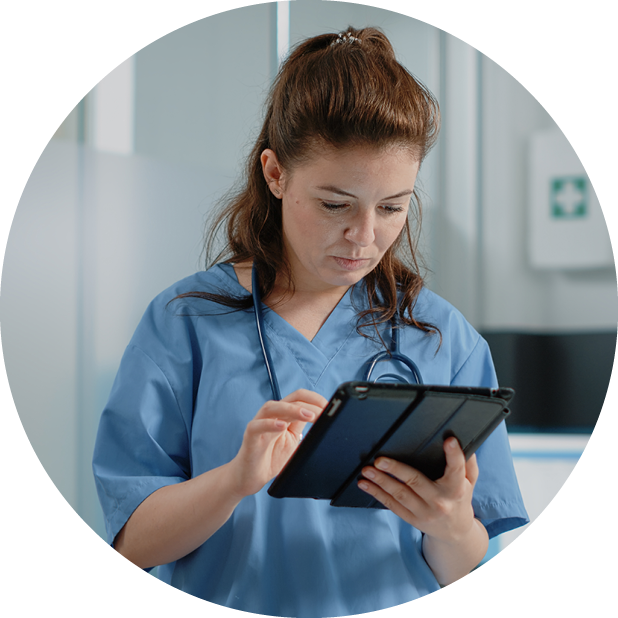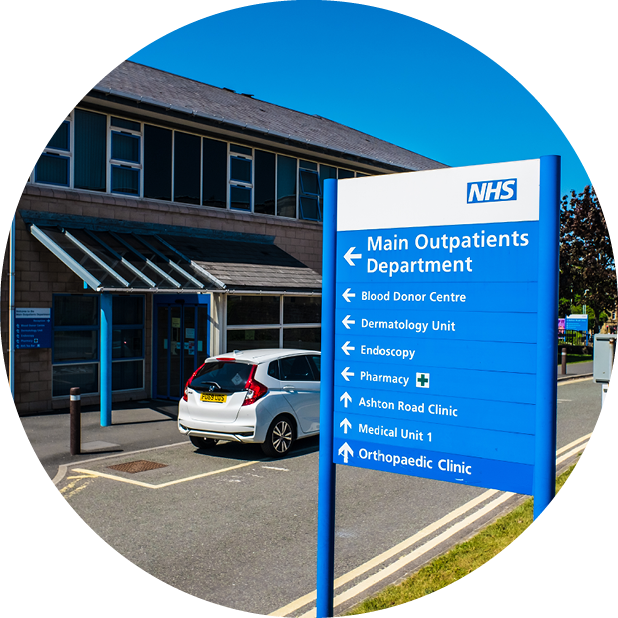

Straight-to-test, symptom-based pathways
We have shown with Bleepa® how the outpatient model can be transformed – with diagnostic enhanced advice and guidance – to significantly speed up the time from primary care referral to diagnosis and to either retain patients in primary/community care or refer into secondary care, using existing staff and resources.
It enables patients to progress straight to test with clearly defined symptom-based pathways and an asynchronous multi-disciplinary team review with all the diagnostic data available within Bleepa®. Tests, if required, are carried out sooner to enable better and faster clinical decisions to be made on the basis of diagnostic evidence. The need for outpatient appointments is also reduced – categorised as a ‘diversion’ from the traditional pathway – optimising the use of clinician time and reducing waiting lists.
- Access to key data for those who need it, including the full GP record with patient history
- Share and discuss information in a patient-centric chat
- Facilitate specialist advice and guidance across teams and individuals
- Enable better, more efficient clinical decisions

Improving productivity and reducing wait lists
Based on our award-winning programme at Queen Victoria Hospital NHS Foundation Trust, we’ve successfully demonstrated how an asynchronous pathway approach can have an impact on removing unnecessary appointments and reducing wait lists using diagnostic enhanced advice and guidance.
This redesigned outpatient model:
- Transforms a 20-30 minute traditional outpatient appointment into a 5-10 minute asynchronous review
- Achieves up to a 90% reduction in outpatient appointments
- Achieves up to a 63% reduction in referral to treatment wait times compared to the national target (from 18 to 6.6 weeks)
- For one specialty, with 50% consultant programmed activity (PA) sessions handled asynchronously in Bleepa a trust could see a 34% reduction in wait list in year (based on a clinical specialty receiving 28,000 referrals per annum, with a waitlist of 13,000 patients and 15 consultants changing two PA sessions per week on asynchronous OP activity)
“The vision from the beginning was to redesign the model of care so that once referred, patients went straight to diagnostics, thereby reducing the need for a first outpatient appointment and reducing the risks of bouncing patients back to GPs for further referrals to different specialties.
“With Bleepa as the technology enabler, this has optimised and automated multiple steps on the pathway with greater visibility of where the patient is on their care journey to multiple people across the clinical teams.”

Faster decision making
The new pathways optimise the use of existing resources, so that less time is taken on unnecessary activities and appointments – freeing up more time to be directed to where it is needed most and enabling faster decision making.
The model has been in place at Queen Victoria Hospital in Sussex, winning an HSJ Partnership Award for Most Effective Contribution to Clinical Redesign and has also been outlined in the all-party parliamentary group for diagnostics report on community diagnostic centres – where Bleepa delivered a 90 per cent reduction in outpatient appointments and a 45 per cent reduction in referral to diagnosis times for a breathlessness symptom-based pathway.
Referral pathways before and after Bleepa

“As part of the QVH Breathlessness Pathway steering group, we provided the GP’s perspective to the team from the beginning. Our feedback was key to shaping the end-to-end process which is now streamlined, straightforward and well executed.
The pathway coordinator schedules the tests for patients on one day, meaning less trips to hospital and less time to reach a diagnosis. We receive a clear and concise summary of the outcome at the end of the patient episode, informing decisions for ongoing care. The pathway process is more efficient without any additional workload.”

Facilitate patient pathways
Patient pathways can be configured to speed up the referrals process:
- Straight to diagnostic tests
- Referral back to the general practitioner, where appropriate, reducing outpatient appointments
- Referral to multi-disciplinary teams in secondary care for treatment discussions
- Referral onward to specialist care for treatment, where needed
Bleepa supports assessment of patient needs and is fully auditable, making it easy to quickly show that safe, effective care has been provided. It also ensures that the care team has all the information they need for a holistic view of the patient’s needs, supporting the creation of timely treatment plans and capturing ongoing care requirements.
“The redesigned pathway has really helped to improve communication and collaboration between clinicians. Bleepa® has enabled us to review the results rapidly and have multi-disciplinary discussions virtually to expedite decision making. It is easy to refer patients onto the pathway and to discuss and respond to the GPs with our recommendations.”



